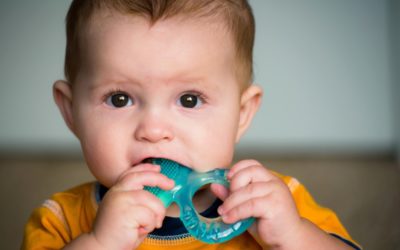This seems silly to ask first-time parents, but I am asked how to change a baby’s diaper every day. It can cause a lot of undue stress.
Much of my pediatric practice is young moms and dads, shell-shocked new parents from the first few days of their newborn’s life.
They are exhausted and emotional, and drained. And fearful. Most new parents are worried to some degree that they are going to hurt their new child.
Welcome to Parenthood!
While it may not be the most glamorous part of parenting, changing a baby’s diaper is essential.
Diapers act like protection for your infant and are vital in preventing irritation or rashes caused by neglecting to change often. Here are some helpful tips for changing your baby’s diaper.
Change your Baby’s Diaper
It may seem easy and obvious enough but, changing a dirty diaper can feel very daunting. Most of us don’t clean up someone else’s poo! Many new parents are terrified of hurting their new baby.
Babies are fragile, of course, but if you have ever watched a baby being delivered, newborns are not nearly as fragile as they may seem. On the contrary, they are resilient little things and are very flexible.
Changing a dirty diaper does not need to be scary, and you are very unlikely to hurt your baby in a diaper change.
You will become an expert before you know it. You may even become a pro at ‘one-handed’ changing!
It doesn’t matter the baby’s age; I can easily change a newborn’s bum and a toddler’s bum simultaneously, in the dark, without my glasses on. Legit.
You could distract your older baby from the diaper change by giving them a toy to play with long enough for you to get their bottom wiped and changed.
Diapering does not need to be scary.
Here are some tips for a little preparation and planning:
- First, remember to wash and dry your hands before you start the process and afterward as well.
- Use a warm, clean area for changing dirty diapers.
- A diaper change table and changing pad are excellent, but you can even use the floor.
- NEVER step away or take a hand off your baby when you are changing a soiled diaper. It takes less than a second for a baby to roll off and risk significant injury. When babies fall during changes, it is usually when a caregiver steps away for a second.
- You cannot predict when your baby might decide to roll over for the first time. Our eldest son, Dylan, rolled at six days of age! On video! Always have your hand present in case the baby decides to move.
- Have your clean diaper, wipes, clothes, and any creams you may need on hand and close by on the changing table or around the baby’s diaper area.
Wiping
Expert advice suggests that wiping your baby from the front to back is a crucial way to keep them healthy.
Gently wipe their skin with a wet washcloth, cotton balls, or wipes as you go along, and be sure not to forget any creases in the thighs and buttocks. For boys, it’s also essential that they have clean diapers over their penis during changing because exposure to air can make them urinate on anything within range – this includes walls and faces! Once finished, pat dry with a fresh cloth.
Diaper Changing Tips
- Change diapers often to avoid diaper rash. Most diaper rashes are caused by moisture (pee and poo) coming in contact with the skin.
- Distraction helps! If a baby is distracted, they will be less likely to squirm or roll away from you.
- You can sing to your baby or talk to them to keep them busy. You can offer a toy during the diaper change. I keep a box of toys on my change table and switch them up frequently. Make sure the baby’s legs are secure.
- Keep a new diaper at arm’s reach. Babies go through them very quickly! It sucks when you run out of clean diapers right in the middle of changing a big poo!
- If your baby is leaking out of the diaper, it may be time to go up a size, or sometimes the diaper may be too big. Read the box; it’ll tell you what weight is most appropriate for that size disposable diapers.
- How to change a boy baby diaper? The exact process but easy diapering trick for baby boys:
- when you put on the diaper, gently push or direct the penis down, so the stream of urine will go down and not up towards the belly button. Clean the baby’s stomach if they accidentally urinate.
- How to change a wet diaper on a toddler? You can perform the same steps as above or switch to pull-on diapers, or master the art of putting on a diaper while a toddler is standing.
- Trust me. All parents end up learning this skill as children no longer want to lie down for diaper changes!
- When you are out of the house, take an extra plastic bag, so you have somewhere to throw the poopy diaper away.
How to Use Cloth Diapers
The cloth diapers we use today are often made up of three layers: the outer layer, an absorbent liner or insert (sometimes called a pre-fold), and then another layer to hold everything in place.
This design is based on disposable diaper technology, which requires you to wash the whole thing when it’s dirty rather than just replacing only one part with an all-in-one type that has every component inside already, so they don’t require as much care for washing.
Changing a Fussy Baby’s Diaper
If your baby is fussy during diaper changes, you’re not alone.
There are several reasons why this could happen, and they may vary from one baby to the next: it can be because they are uncomfortable, or maybe they don’t like lying on their back, they are tired or hungry; they need extra love, etc.
A newborn’s diaper change can be a trying time for both parents and babies alike. However, there are always ways to make the process easier for baby girls and boys.
-Switch up diaper brands or types of diapers (cloth vs. disposable). Try using wipes in different scents or pictures on the diaper that the baby can look at while changing them.
Try keeping a box of toys nearby. You can pass them a new toy when you change them to keep the baby distracted and happy.
Changing Diapers on Sensitive Bottoms
Babies often pee and poo much more than adults, so their skin can quickly become irritated; it’s not just the day-to-day cleaning they need.
It may seem like a small problem, but unfortunately for your baby’s sensitive, fragile new body, even seemingly harmless things such as laundry detergent and fabrics in clothes they wear might irritate their delicate newborn skin.
It is important to keep changing diapers regularly. If they sit in their diaper for too long, some babies will develop an uncomfortable rash, and no one wants a baby to be uncomfortable.
Avoid Diaper Rash
With a bit of care and protection, you can keep your baby’s bottom healthy.
Here are our top tips:
- Keep their skin clean
- Always dry the area before changing the baby’s diapers to avoid moisture from leaking through onto sensitive skin;
- Apply the correct cream to prevent dryness or rashes.
- Clean your baby’s skin. You’ll want to change their wet or soiled diapers right away and check more frequently in newborns or babies with diarrhea.
- Using wipes can be a great way of keeping your little one clean during diaper changes – make sure you choose ones that are mild enough for delicate baby skin.
- Stay clean and dry! One of the best ways to heal diaper rash is to keep your baby’s bottom area free from soiling. Wait until they are finished urinating or defecating before wiping, then pat them down with a wipe– no rubbing needed.
Diaper Bag
If you’re a new parent, the joy of going out with your baby can be overshadowed by anxiety over what to do if they have an accident. That’s why your diaper bag must always have all the essentials.
Essentials for any diaper bag include the following: diapers, wipes, plastic bags to hold dirty diapers or clothes from accidents.
A portable changing pad and ointment keep your baby clean and comfortable during changes.
An extra change of clothing in case something goes wrong will save you many tears.
Babies need a lot of gear. Your diaper bag is going to become your home away from home since you’re always with it, and you’ll never leave without yours.
Choose one that has lots of pockets, which will let you keep all the baby’s essentials as well as whatever else fits in your purse at any given moment.
Final Thoughts
One thing to remember is that it may be challenging to get the hang of changing a dirty diaper at first. But, with enough practice and time spent working on your technique, you’ll soon find yourself an expert in no time.
If you have any questions or concerns about this process, please reach out for more information. Give your little one their best chance at living life as happily as possible while they grow up!
FAQs
Does diaper size matter?
Diapers are one of the most important items in your baby’s life. One that has them feeling comfortable is better than a tight diaper which may cause discomfort or chafing and rashes on sensitive skin. If you see any red marks on their hips when they go potty, then it’s time for an upgrade!
Where do you throw away a dirty diaper?
Many parents use diaper bins in the nursery, or you can take the diaper right outside to your garbage bin. Use public bathroom garbages, park trash cans, and airplane bathrooms when you are out of the house.
Does diaper ointment make a difference?
While getting to the root cause of your baby’s diaper rash is essential for healing, using a diaper cream can provide relief and prevent future flare-ups.
Should I use safety straps when I change my baby?
Changing tables with a safety strap offer minimal extra protection. The flimsy straps are designed to keep your child in place; they’re not intended to keep them safely secured on the table.
Even if you use a changing table with restraints or straps, always make sure you never let your eyes off of them or your hands off of baby when you change baby’s diaper!
Can I use petroleum jelly as a rash cream?
Professional medical advice suggests that Petroleum jelly and moisturizing lotions are effective remedies for a rash. Petroleum jelly can alleviate the discomfort caused by a rash or irritation from something in your environment like soaps, diapers, and clothing and provides a barrier from pee and poo. Other moisturizers such as Cetaphil will help heal dry skin that’s been made irritated by exposure.
What is zinc oxide cream?
Zinc oxide is a natural mineral applied directly to minor skin irritations such as burns, cuts, and diaper rash. Zinc is also in many beauty products, including sunscreen lotions or ointments for the face and body.










